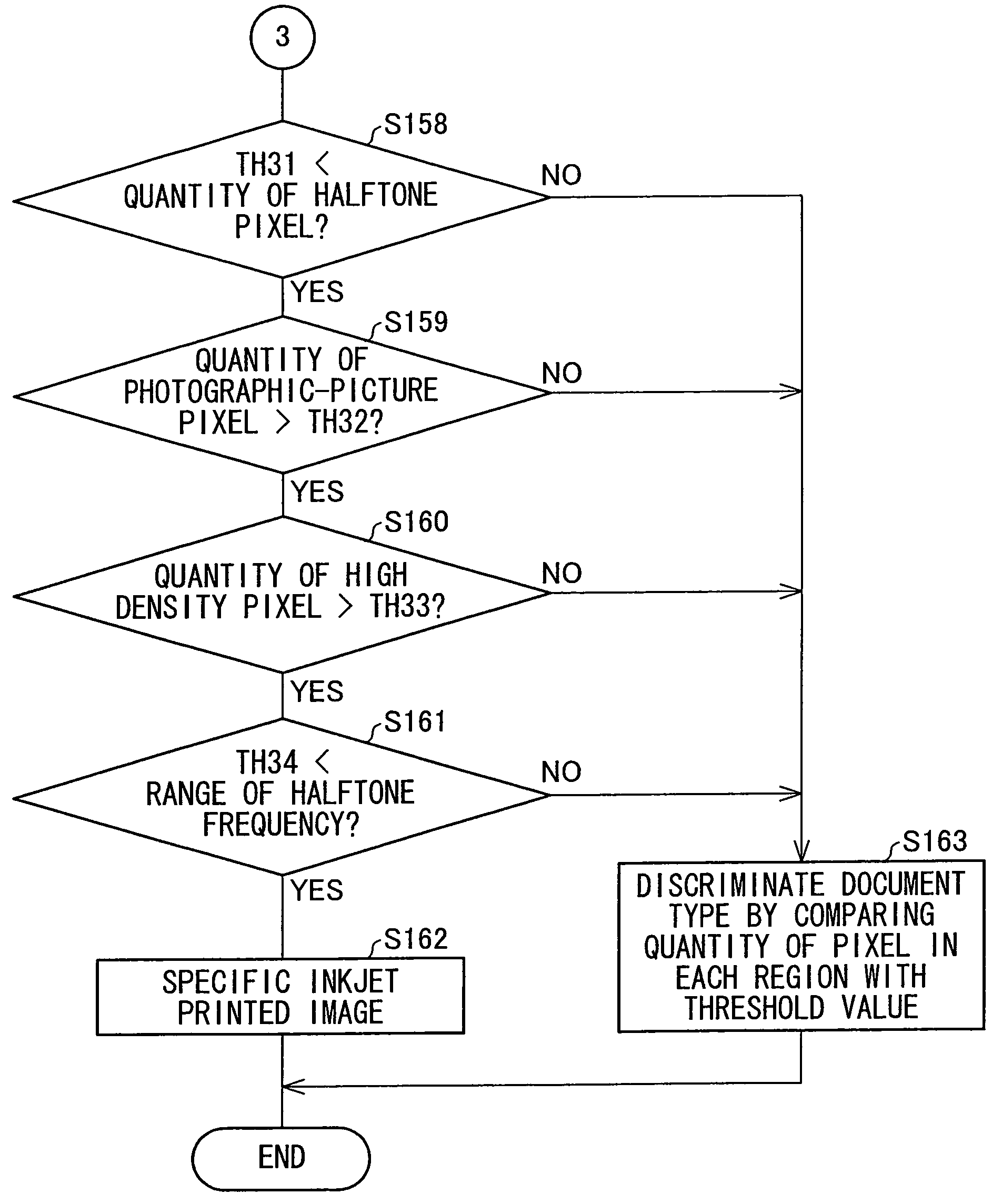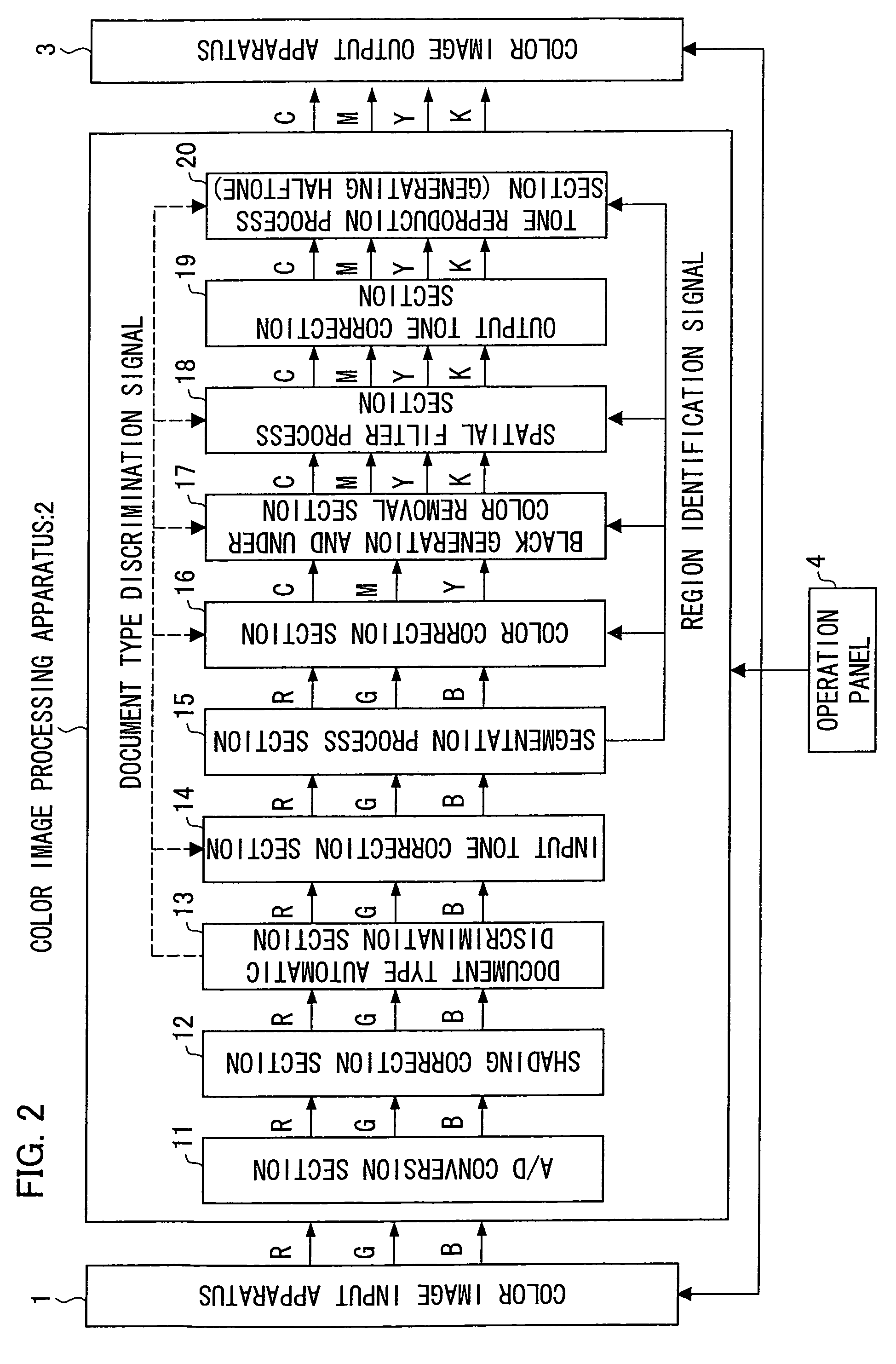Image processing apparatus, image forming apparatus, method for processing image, computer program, and recording medium
a technology of image processing and forming apparatus, which is applied in the field of image processing apparatus, image forming apparatus, image processing method, computer program, etc., can solve the problems of difficult to distinguish between all inkjet printed images, waste of copies, and user's troublesome switching between modes for each document, so as to improve the accuracy of discrimination and improve the image quality of reproduced images
- Summary
- Abstract
- Description
- Claims
- Application Information
AI Technical Summary
Benefits of technology
Problems solved by technology
Method used
Image
Examples
first embodiment
[0040]The following describes an embodiment of the present invention. In the following description, a case where an image processing apparatus of an embodiment in the present invention is applied to a digital color-copying machine is described. The condition is the same in other embodiments.
[0041]FIG. 2 is a block diagram schematically illustrating a image processing apparatus of the embodiment is applied. structure of a digital color-copying machine to which a color
[0042]As illustrated in FIG. 2, the digital color copying machine of the embodiment includes a color image processing apparatus 2 constituted of an A / D conversion section 11, a shading correction section 12, a document type automatic discrimination section 13, an input tone correction section 14, a segmentation process section 15, a color correction section 16, a black generation and under color removal section 17, a spatial filter process section 18, an output tone correction section 19, and a tone reproduction process ...
embodiment 2
[0167]The following describes another embodiment of the present invention.
[0168]In the embodiment, in place of the document type automatic discrimination section 13 of Embodiment 1 that is illustrated in FIG. 1, a document type automatic discrimination section 113 in FIG. 9 is employed.
[0169]The document type automatic discrimination section 113 includes a minimum density value calculation section 51, a maximum density value calculation section 52, a maximum density difference calculation section 53, a total density busyness calculation section 54, a discrimination region setting section 55, a text / halftone discrimination section 58, a page-background / photographic-paper discrimination section 59, a text pixel counting section 62, a halftone pixel counting section 63, a halftone frequency determination section 70, a page-background pixel counting section 64, a photographic-paper pixel counting section 65, and a document discrimination section 66.
[0170]The minimum density value calcul...
third embodiment
[0227]The following describes another embodiment of the present invention.
[0228]In the Embodiment, a document type automatic discrimination section 213 illustrated in FIG. 14 is employed in place of the document automatic discrimination section 13 illustrated in FIG. 1 of the First Embodiment.
[0229]The document type automatic discrimination section 213 includes a minimum density value calculation section 81, a maximum density value calculation section 82, a maximum density difference calculation section 83, a total density busyness calculation section 84, a discrimination region setting section 85, a text / halftone discrimination section 88, a page-background / photographic-paper discrimination section 89, a high density pixel discrimination section 97, a text pixel counting section 92, a halftone pixel counting section 93, a high density pixel counting section 99, a halftone frequency determination section 100, a page-background pixel counting section 94, a photographic-paper pixel co...
PUM
 Login to View More
Login to View More Abstract
Description
Claims
Application Information
 Login to View More
Login to View More - R&D
- Intellectual Property
- Life Sciences
- Materials
- Tech Scout
- Unparalleled Data Quality
- Higher Quality Content
- 60% Fewer Hallucinations
Browse by: Latest US Patents, China's latest patents, Technical Efficacy Thesaurus, Application Domain, Technology Topic, Popular Technical Reports.
© 2025 PatSnap. All rights reserved.Legal|Privacy policy|Modern Slavery Act Transparency Statement|Sitemap|About US| Contact US: help@patsnap.com



